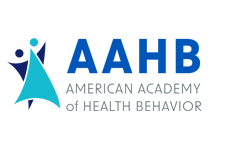Abstract
This study employs the Theory of Triadic Influence (TTI) which articulates the different variables that influence health-related behaviors into streams of influence—intrapersonal, social, and cultural—to better understand factors that influence positive drug use expectancies (PDE) among Hispanic adolescents. Data for the study came from Project RED, which included 1,963 high school students in Southern California. The relationships between participants’ drug expectancies and different streams of influence were examined using regression analysis. Participants were mostly females (54.2%); with a mean age of 17.13 years. Controlling for other covariates, there were no cultural stream variables associated with PDE (Model 1). Model 2, assessing social environment stream of influence, had a strong association with PDE (adjusted R2 = 0.25). PDE significantly increased with drug use consequences (β = .48) parent (β = 1.28) and sibling (β = 2.97) alcohol use, and peer approval of alcohol use (β = 2.0). PDE decreased with increasing parental communication (β = -.22) and peer disapproval of marijuana use (β = -5.2). Model 3, including intrapersonal factors, results showed a significant positive relationship between PDE and drug use consequences (β = .47), parent (β = 1.06) and sibling (β = 2.97) alcohol use, peer approval of alcohol use (β = 2.05), and stress (β = .23). There was a negative significant relationship with parental communication (β = -.21), peer disapproval of marijuana use (β = -5.2), and depression (β = -.09). Findings from this study help organize and clarify the important factors associated with PDE. Leveraging the ordering and categorizations suggested by the TTI sheds light on the social streams of influence as a prime target for interventions.
Creative Commons License

This work is licensed under a Creative Commons Attribution-Noncommercial 4.0 License
Recommended Citation
Jacobs, Wura; Bartoszek, Lauren; and Unger, Jennifer
(2019)
"Using the Theory of Triadic Influence to Examine Correlates of Positive Drug Expectancies Among Hispanic Adolescents,"
Health Behavior Research:
Vol. 2:
No.
4.
https://doi.org/10.4148/2572-1836.1053




